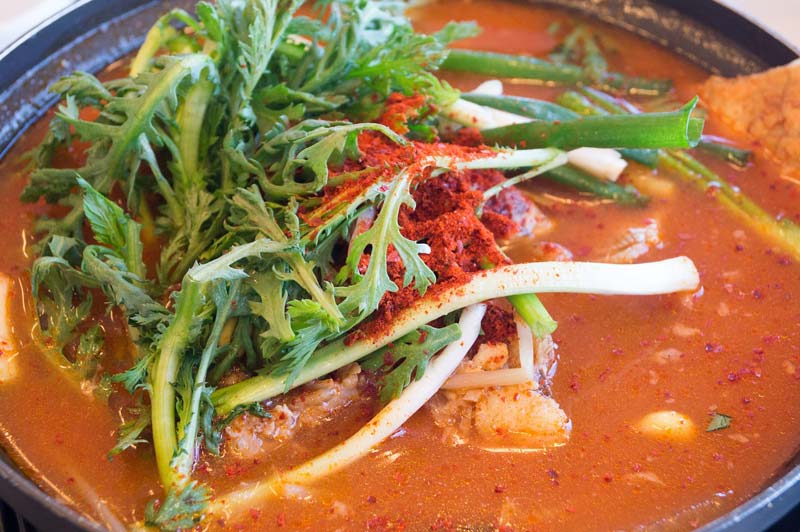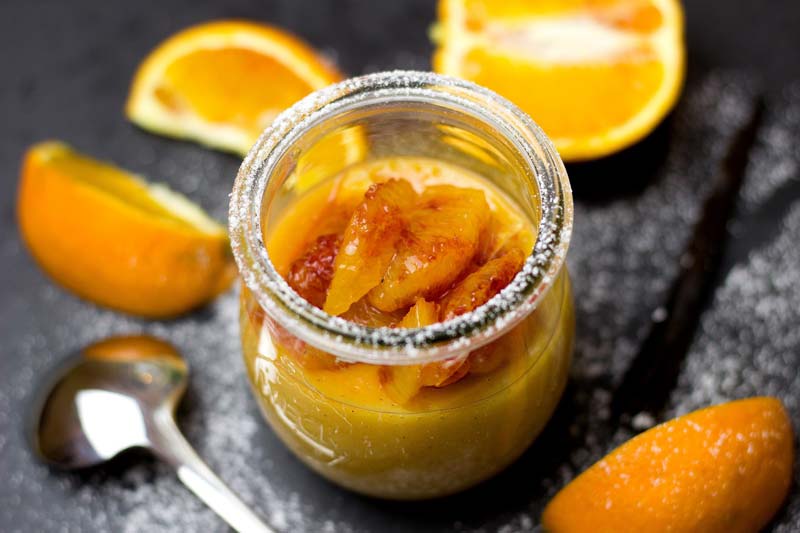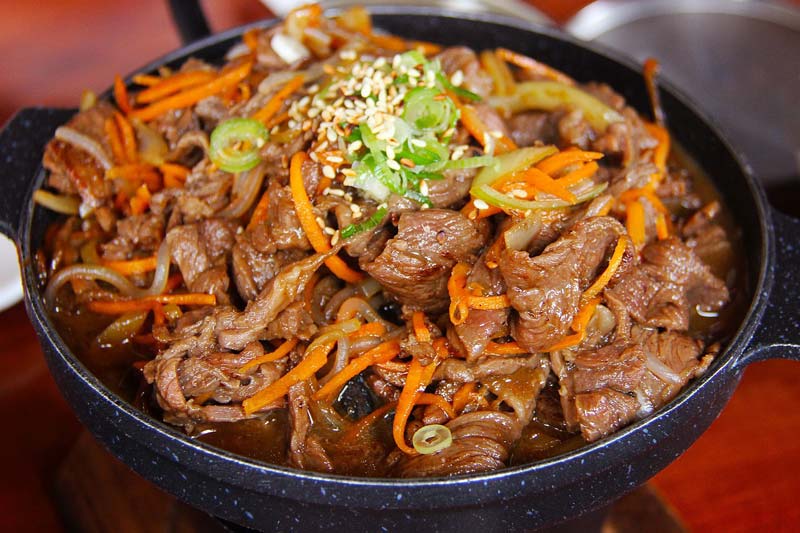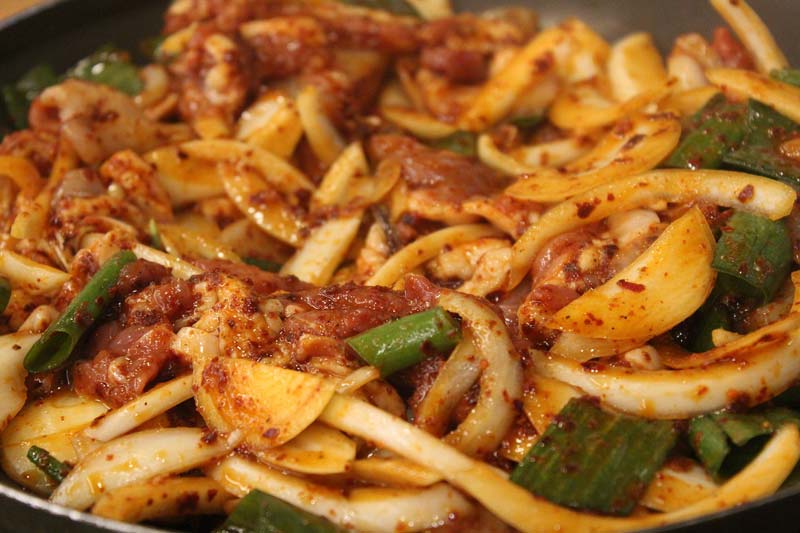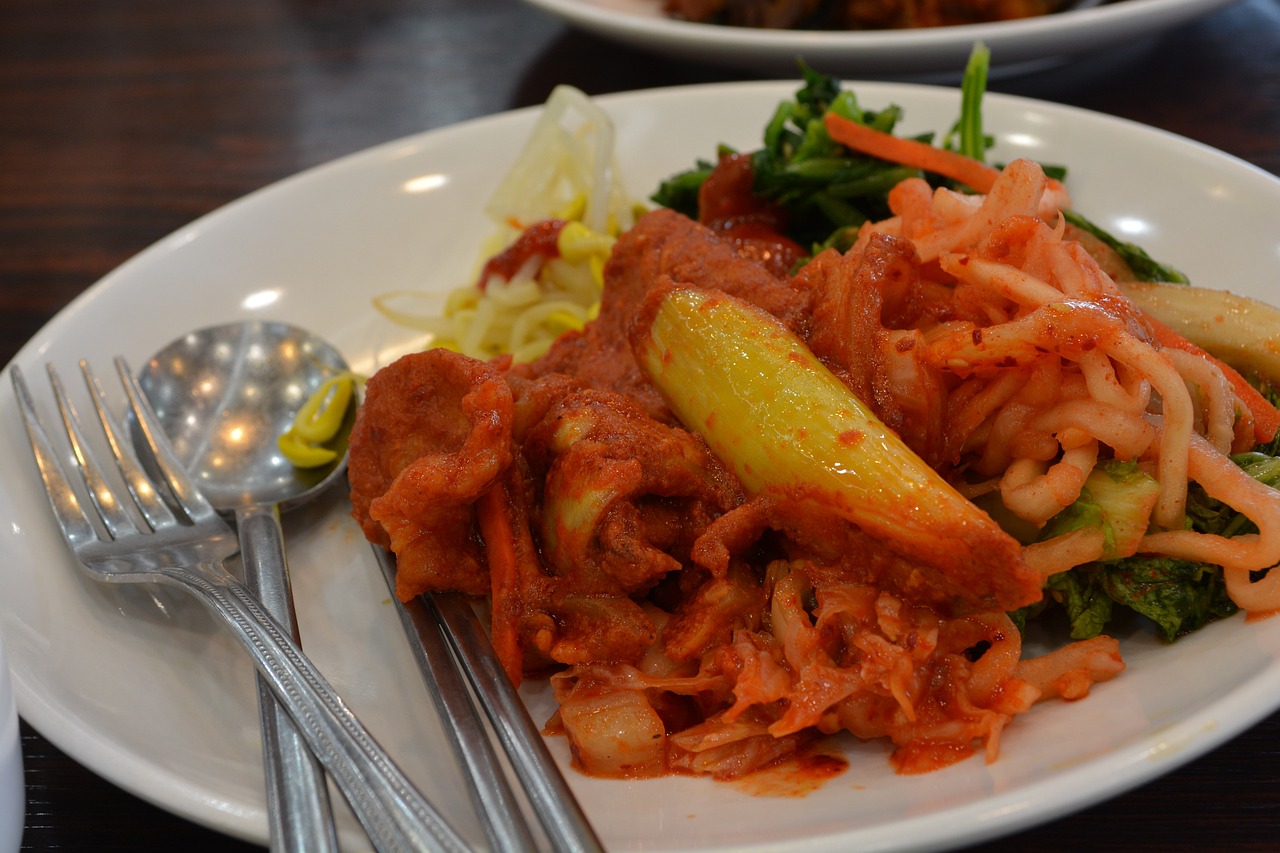Korean cabbage
To make delicious kimchi, it is important to select fine cabbages. Cabbages of mid-size, fully stuffed, and feeling heavy when picked up are desirable cabbages. Good cabbages have the traits that, when pressed, the white part of their stalk should be felt hard and that, when cut into half, the inner part of stalk should taste sweet. Cabbage contains a lot of vitamins and minerals, as well as various elements that produce medicinal effects. There are research papers showing that methylmethionine hidden in cabbage is effective in curing arteriosclerosis and that methylsysteinsulfoxid is helpful in reducing cholesterol.
Radish
Radish is mostly composed of water but it also contains a lot of vitamin C, so it is a desirable food particularly in winter as a source of vitamin. Moreover, its root contains diastase or a kind of digestive enzymes, thus eating raw radishes facilitates digestion. Radish keeps vitamin C in its skin twice as much as that in its trunk, therefore it is better to eat raw radish without peeling (just washing). Large, evenly shaped and flawless radishes are good ones. Other traits of fine radishes are that they are fresh, sleek and have hard but tender inner parts. Good radishes taste less hot and sweeter and they are not pulpy but rigid. It is important to select radishes suitable to usage and season. Large, rigid and watery radishes are better to be used for cabbage stuffing, while small and watery radishes are more suitable as ingredient of ‘Ggakdugi’ (cubed radish kimchi).
Red pepper
Red pepper is divided into ‘Taeyangcho’ and ‘Hwageoncho’ by its origin as well as method of drying. The former is large, clear-colored and has stronger hot taste, while the latter is hard, thinly skinned and has a sweet tint. To make good kimchi it is desirable to mix both kinds in a proper ratio. Red pepper contains carotinoid, vitamin C and other various components. Capsaicin, the source of red pepper’s hot taste, generates sterilizing and purifying effect, while facilitating secretion of saliva and gastric juice, thus it is very helpful for digestion. As it tastes too hot, red pepper is normally dried and shredded into flakes or powder to be used as condiment of kimchi.
Garlic
In Korea garlic is used as condiment for nearly all kinds of food. If raw garlic is chewed or cut into pieces, strong smell and flavors are generated, which helps remove odor of meat and stimulate its taste. Therefore, garlic has been widely used in cooking of Korean dishes. Garlic not only gives vitality to heart and muscles of human body, but also enlarges blood vessel near body skin, thereby circulating warm blood smoothly. Allin, an element contained in garlic, has strong effect of sterilization. The element also increases vitamin B compounding inside human body, restrains forming of blood clot and facilitates secretion of digestive fluid. In addition, garlic contains allyl sulfide which has sterilizing power 15 times as large as that of carbonic acid. Allyl sulfide is effective in speeding up metabolism, relieving pain, preventing constipation and neutralizing poison.
Pa (scallion or green onion)
This vegetable contains a lot of calcium, salt and vitamin, while generating unique flavor. Vegetables are generally alkaline but scallion is an acid food retaining a lot of sulfur. Green onion is a vegetable hard to store since 80% of its contents is water. Vitamin A and C are mainly found at its green part. Its pungent taste is caused by sulfur-mixed allyl compound, which has sterilizing and insecticidal effect. ‘Daepa,’ a kind of green onion, has much moisture and viscosity and therefore makes kimchi slippery when used as condiment. For this reason ‘Jjokpa,’ another kind of green onion, is the favored ingredient of kimchi.
Ginger
Mixed in harmony with vinegar, soy sauce, salt and honey, ginger does not lessen original taste of any food. Ginger contains a lot of inorganic contents, while generating peculiar scent and hot taste. The hot taste of ginger comes from gingerol kept inside it. The gingerol facilitates blood circulation and has perspiring and antibiotic functions. When put into food, ginger makes a very hot taste, which helps remove fishy smell or other stink.
Salt
Korean salts have been classified into ‘Cheonilyeom,’ ‘Hoyeom,’ ‘Jeongjeyeom’ and ‘Amyeom’ according to their granular shape. In pickling cabbage or radish is mainly used Hoyeom whose color is not so black, while in seasoning of food is used white Jeongjeyeom. Not to mention its role of seasoning food, salt is indispensable to our lives in nutritious and physiological aspects. Salt absorbed into our body does osmotic function within blood, digestive fluid and tissue fluid.
Cucumber
95% of cucumber is water but the vegetable also contains vitamin A, B1 and B2 richly, so it is a source of vitamins. A variety of side dishes are cooked using cucumber, such as ‘stuffed cucumber pickles,’ ‘cucumber pickled in salt,’ ‘cucumber cold soup’ and ‘cucumber slices seasoned with soy.’ Korean cucumbers are largely divided into ‘native cucumber,’ ‘Gasi cucumber,’ ‘young cucumber’ and ‘old cucumber.’ It is desirable to choose the right kind of cucumber suitable for each case of cooking.
Leek
The unique aroma of leek is caused by allyl sulfide which, mixed with vitamin B1, improves digestive power and generates sterilizing effect. Leek in Korea is divided into ‘native leek’ and ‘reformed leek.’ Native kind, in particular short leek, is suitable for making ‘leek kimchi’ as it tastes better and dry. Leek with clear and green leaves is the good one, while bent or withered leek is to be avoided.
Godeulbbagi (Korean lettuce)
Main component of the vegetable is inulin, which generates puckery and bitter taste. Young leaves and root of the vegetable are boiled and mixed with condiments, to be served as a side dish or used to make Godeulbbagi kimchi.
Dalrae (wild garlic)
Dalrae, a wild plant dubbed ‘small garlic’ in the old Korea, has been widely used in cooking and as material of medicine. Dalrae kimchi, a watery kimchi with good aroma and taste, is made from this plant. Mix dalrae with thickly cut radish and salted fish (in similar way as preparing raw vegetables), and then pour salt water above them and put into storage, then the special Dalrae kimchi will be made.
Leaf mustard
The stalk of leaf mustard has unique scent and a little hot taste. Its leaves together with the stalk are put into making kimchi or boiling vegetables. Seeds of the plant are ground into powder, to be used as a spice (mustard) as well as a material of medicine (called ‘Hwanggaeja’). In leaf mustard are contained protein, ash content, carotene and niacin as well as glucose and sugar. In addition, vitamin C, calcium and iron are richly included in the plant. Red-colored leaf mustard will be suitable to the kinds of kimchi that use red pepper, such as ‘leaf mustard kimchi,’ ‘cabbage kimchi’ and ‘Ggakdugi’ (cubed radish kimchi). Green-colored leaf mustard will match with such kinds as ‘white kimchi’ and ‘watery radish kimchi.’
Pickled anchovy
It is a kind of preserved food, made by spreading salts on anchovies and storing them for 2~3 months. The food is called ‘Chunjeot’ when made in spring season and ‘Chujeot’ when made in autumn. If the salted anchovies are stored longer than 6 months, they will be transformed into ‘pickled anchovy soup.’ After over 6-month storage, substances in the soup will be ground and filtered off. And then, the soup will be boiled and stored again, to be put into making kimchi.
Pickled shrimp
This is also a preserved food made by storing salted shrimp. It is called ‘Ojeot’ when made in May, ‘Yukjeot’ when made in June, ‘Chujeot’ when made in autumn and ‘Dongbekhajeot’ when made in winter. Of them, yukjeot is deemed the best condiment for kimchi as it is normally made with shrimps that are thick, plump, clean, pink-colored and clearly shaped. Pickled shrimp soup, achieved through long fermentation, is also put into making kimchi. Of the soups, the one with yellow and milky color and sweet taste is reckoned the most suitable to kimchi.
Minari (parsley)
It is an alkali food rich with vitamins and inorganic substances. It is mainly used as a vegetable but also utilized as a medicine since it has remedial effect such as alleviation of fever and dropping of blood pressure. Generally minari is washed, boiled and seasoned, to be taken as a cooked vegetable. Raw minari is mixed into preparing kimchi, which then generates unique flavor and refreshing taste.
(korfood/korfood1_3.jsp)

